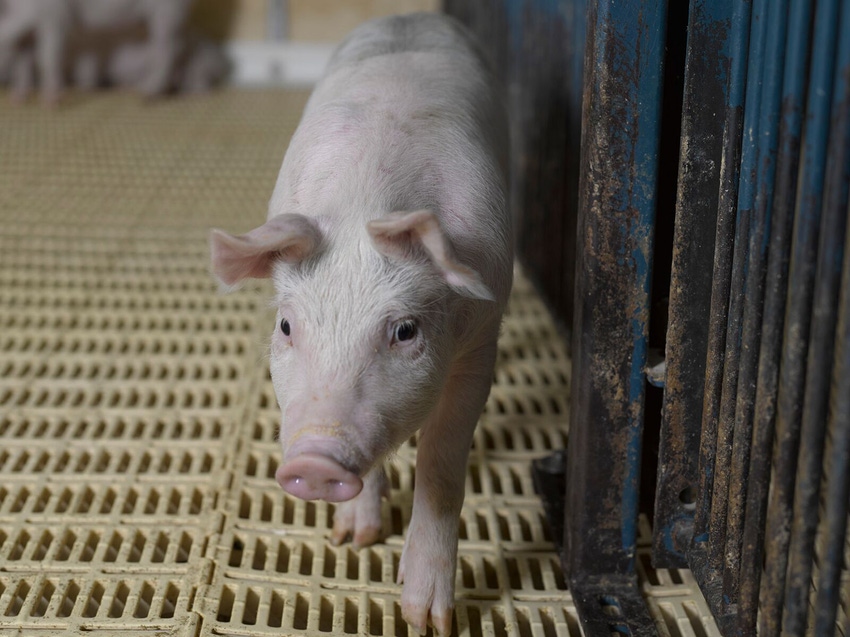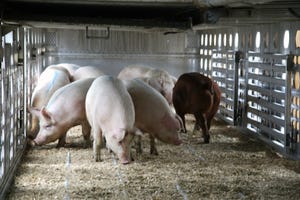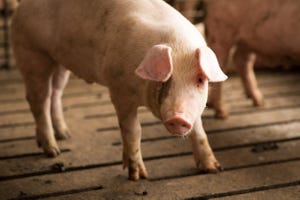SHIC Diagnostic Fee Support Program led to porcine sapovirus discovery
Program has yielded publications and papers on unusual pathogens to inform the greater swine industry.
May 8, 2023

From early 2017 to early 2019, veterinarian Tom Petznick knew his client's 4,500-head farrow-to-wean swine herd had a new disease not previously seen by him or his colleagues. "We did our homework, did diagnostic testing, and found out we had something different here," he explained.
When diagnostics ruled out transboundary and emerging diseases in the herd, staff at the Iowa State University Veterinary Diagnostic Lab encouraged additional testing and suggested contacting the Swine Health Information Center to access the SHIC Diagnostic Fee Support program. With the additional funding and continued scrutiny, porcine sapovirus was discovered.
Petznick, a practitioner with ArkCare in Omaha, Nebraska, knew about SHIC's Diagnostic Fee Support Program from reading about it in SHIC's newsletter and hearing about it on swine industry committees where it has been promoted. He was working with Phil Gauger and Eric Burrough at ISU's Veterinary Diagnostic Lab who were advising further analysis.
Pursuing Diagnostic Fee Support from SHIC went well for Petznick. "If you have an underlying question that needs answered and are determining who pays for additional diagnostic testing, do your homework and make a compelling case and present it," he explained. "That's what SHIC’s Diagnostic Fee Support is set up for. It was seamless on my end.”
Petznick encourages producers and practitioners to keep this program in the back of their minds. "When something doesn't smell right, go with that gut feeling and do more investigation," he said. "This is what SHIC is about – helping us with both prevention and mitigation of new bugs."
Gauger shares Petznick's view of SHIC's Diagnostic Fee Support program and its value when looking for new and emerging diseases. "When veterinarians have looked at a clinical presentation of a respiratory or enteric disease and completed a workup as they would typically do up front so that it rules out the normal diseases and still have no answers to what is affecting the animals, then this program becomes a great go-to to help the veterinarian and producer find answers," he commented.
While diagnostic labs have improved the sensitivity of detection techniques, allowing identification of pathogens at low levels in samples and increased techniques such as next generation sequencing, which helps identify co-infections or multiple pathogens, diagnostic questions can remain. "I hope producers, veterinarians and diagnostic labs remember this program as they are looking for the new and emerging diseases," Gauger remarked.
From his perspective at the ISU VDL, Gauger sees SHIC's Diagnostic Fee Support program as easy to use. After routine diagnostics from a clinical presentation are completed and the results for expected diseases are negative, the next step is filling out SHIC's Diagnostic Fee Support submission form that includes a plan for follow-up diagnostic testing. The submitting practitioner shares all the case details, including current results from the diagnostic lab involved, and additional samples are submitted after approval through the SHIC Diagnostic Fee Support program. This allows a more extensive and thorough diagnostic work-up of the case that will hopefully lead to a diagnosis.
A great example is the sapovirus diagnosis that was ultimately achieved through this program with Petznick. Gauger emphasizes the importance for the practitioner to work with the diagnostic lab to apply for the SHIC Diagnostic Fee Support and to develop a diagnostic plan so the correct samples are submitted. As a result, the practitioner and lab can build the story leading to a valid diagnostic result for the producer.
"My message to producers is to learn about the support available," Gauger recommended. "If you have a case that needs additional support, don't be afraid to ask because diagnostics can be expensive; be sure you do your due diligence first." He also points out that the program has yielded publications and papers on unusual pathogens to inform the greater swine industry.
"There is so much value in the veterinarian working with the diagnostician at the lab," Gauger concluded. "The practitioner often has more knowledge than they realize and sharing that with the diagnostician can really help the case. And the diagnostician can really help the practitioner and producer, through additional funding with the SHIC Diagnostic Fee Support Program, with frustrating cases that have remained undiagnosed."
You May Also Like



